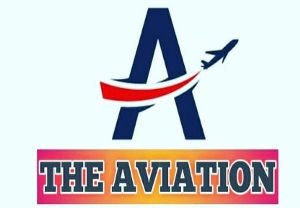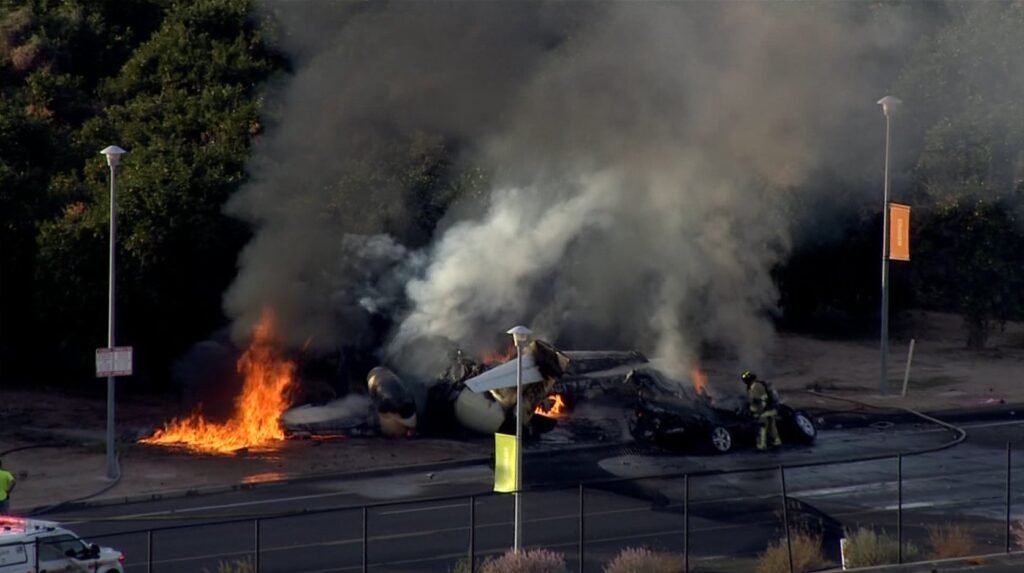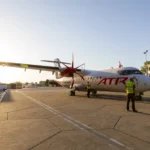Reasons: Why Air India can’t Beat IndiGo in Domestic market
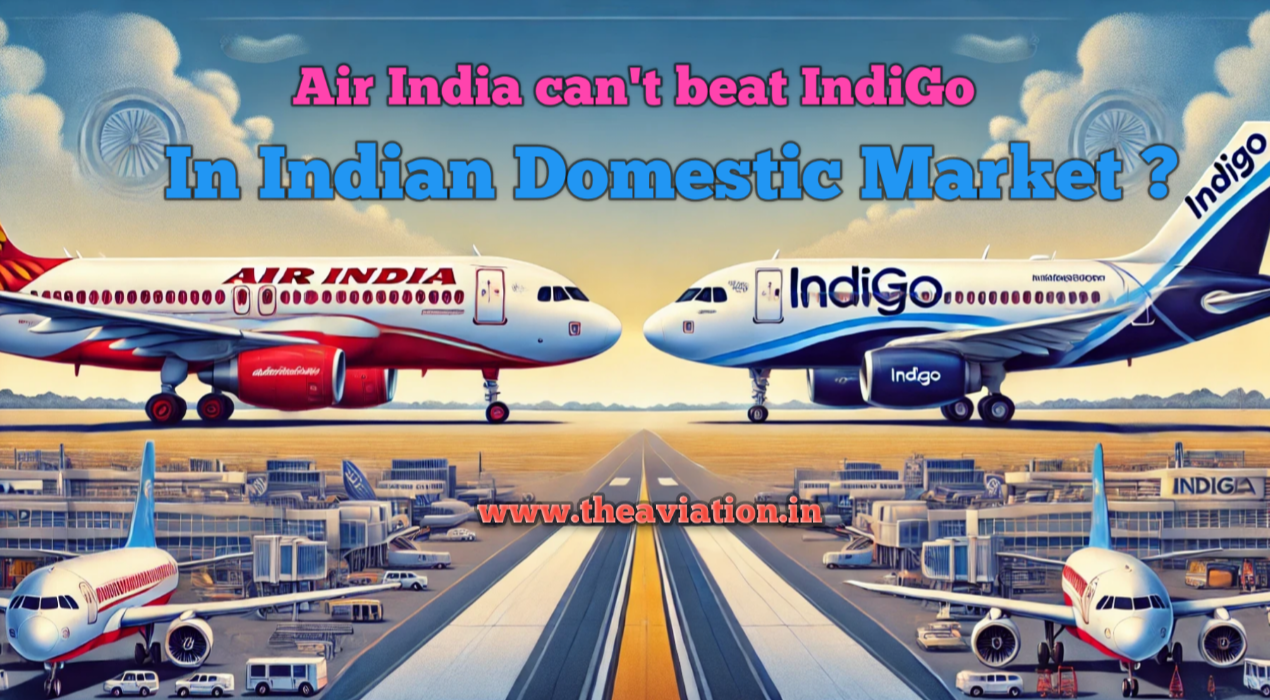
Air India has too far to go in terms of market share India’s aviation sector is witnessing rapid growth, with two key players dominating the skies: Air India and IndiGo Airlines. While both airlines cater to distinct segments of the market, a closer look at their fleet, fleet age, and total seating capacity offers valuable insights into their operational strategies and market positions.
INDIGO
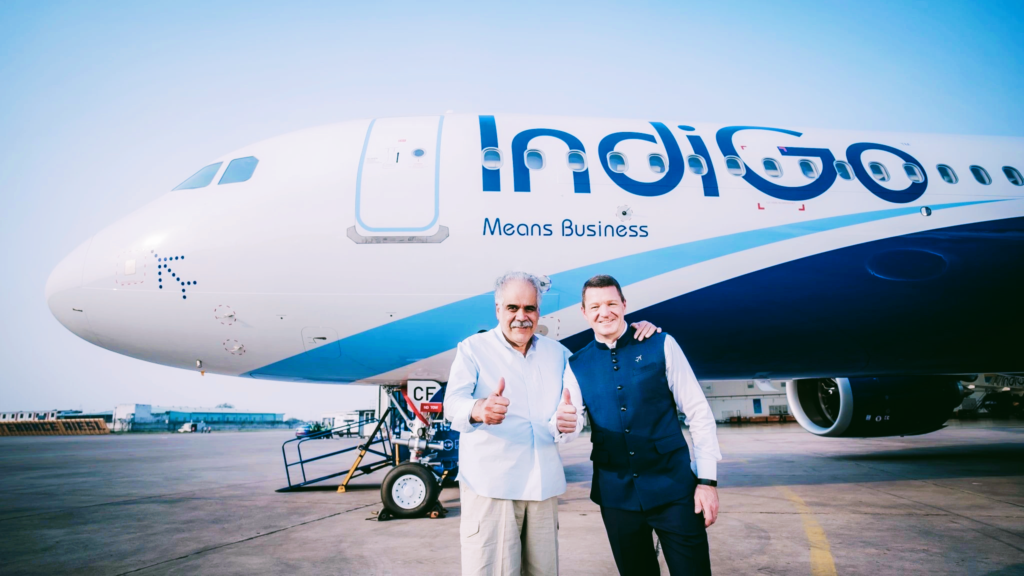
Key Highlights: IndiGo’s Edge
- Fleet Standardization: IndiGo’s reliance on a single-family of aircraft (primarily Airbus A320 and A321 variants) reduces training and maintenance costs, enhancing operational efficiency.
- Younger Fleet: With an average fleet age of 6.1 years, IndiGo boasts one of the youngest and most fuel-efficient fleets in the Indian market.
- Seating Capacity: IndiGo’s fleet is optimized for high-density seating, offering nearly triple the total seats compared to Air India.
- Cost Efficiency: IndiGo’s low-cost carrier model ensures it remains the go-to airline for budget travelers, with competitive fares and on-time performance
- IndiGo launched Business class seating.
As of November 2024, IndiGo operates a diverse fleet of aircraft, each configured to accommodate a specific number of passengers. Here’s a breakdown of their fleet and corresponding seating capacities:
| Aircraft Type | Number in Fleet | Seating Capacity per Aircraft | Total Seats |
|---|---|---|---|
| ATR 72-600 | 45 | 78 | 3,510 |
| Airbus A320-200 | 42 | 180 | 7,560 |
| Airbus A320neo | 201 | 186 | 37,386 |
| Airbus A321-200 | 3 | 222 | 666 |
| Airbus A321neo | 114 | 232 | 26,448 |
| Boeing 777-300ER | 2 | 531 | 1,062 |
Total Seats Across Fleet: 76,632
The Cost per Available Seat Kilometer (CASK) is a key metric for evaluating the operational efficiency of airlines. It indicates the cost incurred to operate one seat over a distance of one kilometer.
IndiGo’s CASK(Cost per Available Seat Kilometer):
In the quarter ending September 30, 2024, IndiGo reported a CASK of ₹4.69 and Air india CASK of nearly 6 Rs per kilometrea. This value represents the airline’s operating expenses in relation to its available seating capacity, highlighting its cost-effectiveness.
AIR INDIA
Air India’s Strengths
- Diverse Fleet: Air India’s ability to operate long-haul international routes is supported by its wide-body aircraft like the Boeing 787 and Airbus A350.
- Premium Services: The airline offers a full-service experience with multiple cabin classes, catering to business and luxury travelers.
- Fleet Modernization: Air India’s recent orders for 470 new aircraft signal its commitment to revitalizing its operations and competing more aggressively in the market.
As of November 2024, Air India’s fleet comprises various aircraft models, each with specific seating capacities. Here’s a breakdown of the fleet and their respective seat counts:
| Aircraft Type | Number in Fleet | Seating Configuration (F/C/W/Y) | Total Seats per Aircraft | Total Seats in Fleet |
|---|---|---|---|---|
| Airbus A319-100 | 8 | -/-/-/114 | 114 | 912 |
| Airbus A320-200 | 4 | -/-/-/150 | 150 | 600 |
| Airbus A320neo | 51 | -/-/24/132 | 156 | 7,956 |
| Airbus A321-200 | 13 | -/-/-/182 | 182 | 2,366 |
| Airbus A321LR | 4 | -/12/24/152 | 188 | 752 |
| Airbus A321neo | 6 | -/12/24/152 | 188 | 1,128 |
| Airbus A350-900 | 6 | -/28/24/264 | 316 | 1,896 |
| Boeing 777-200LR | 3 | 8/35/-/195 | 238 | 714 |
| Boeing 777-300ER | 13 | 4/35/-/303 | 342 | 4,446 |
| Boeing 787-8 | 23 | -/18/-/238 | 256 | 5,888 |
| Boeing 787-9 | 6 | -/30/21/248 | 299 | 1,794 |
Total Seats Across Fleet: 28,442
Indian aviation Market Share:As of November 2024, the Indian aviation market is dominated by two key players

- IndiGo: Commanding approximately 61.6% of the domestic market share. (Source: Skift)
- Air India Group: Including Air India, Vistara, and AirAsia India, collectively holding around 28.7% of the market. (Source: Livemint)
The remaining market share is divided among other carriers such as SpiceJet, Go First, and Akasa Air. These statistics highlight IndiGo’s substantial lead in the domestic sector, followed by the Air India Group.
For a visual representation, refer to the market share charts available on platforms like Statista.
Fleet Age

The age of an airline’s fleet significantly impacts its operational costs and environmental footprint. IndiGo’s fleet stands out with an average age of just 6.1 years, making it one of the youngest fleets globally. This not only ensures lower maintenance costs but also contributes to fuel efficiency and reduced carbon emissions, aligning with global sustainability trends.

On the other hand, Air India’s fleet has an average age of 9.3 years. While the airline has begun modernizing its fleet with orders for new aircraft, it still lags behind IndiGo in terms of fleet modernization.
Fleet Expansion Strategy:
Air India: A balanced approach with a mix of narrow-body and wide-body aircraft to strengthen both domestic and international routes.
IndiGo: A primary focus on narrow-body A320 family aircraft, with the A350-900 signaling a strategic move into long-haul international travel.
Delivery Pace:
Air India: Rapid expansion, with an aggressive delivery schedule ensuring fleet modernization by 2024.
IndiGo: A gradual delivery timeline, with a long-term focus on sustained growth and market penetration from 2027 onward.
Conclusion : While Air India currently offers approximately 1,000 business class seats in the domestic market, IndiGo’s CEO, Pieter Elbers, announced plans to expand significantly. The airline will add 45 more aircraft with IndiGo Stretch seats over the next year, bringing the total to around 540 business class seats by the end of 2025. With nearly three times the total number of seats and aircraft compared to Air India, IndiGo is rapidly reshaping India’s aviation market.
IndiGo Stretch quick lookout:

IndiGo introduced its new business class service, IndiGo Stretch, with the inaugural flight taking off from Delhi (DEL) to Mumbai (BOM) on November 14, 2024
12 spacious seats in a 2×2 layout, offering a 38-inch pitch, 21.3-inch width, 5-inch recline, and a 6-way adjustable headrest. Designed by Recaro (R5 model), the seats prioritize passenger comfort for a superior flying experience. Tech-savvy features include a mobile/tablet holder, a 60W USB-C port, and a 3-pin universal power outlet, ensuring connectivity on the go. Travelers enjoy added perks like a vegetarian meal box, soft drinks, priority check-in, advance seat selection, anytime boarding, a 30kg checked baggage allowance (two pieces), and a 12kg hand baggage limit, blending convenience and value seamlessly.

